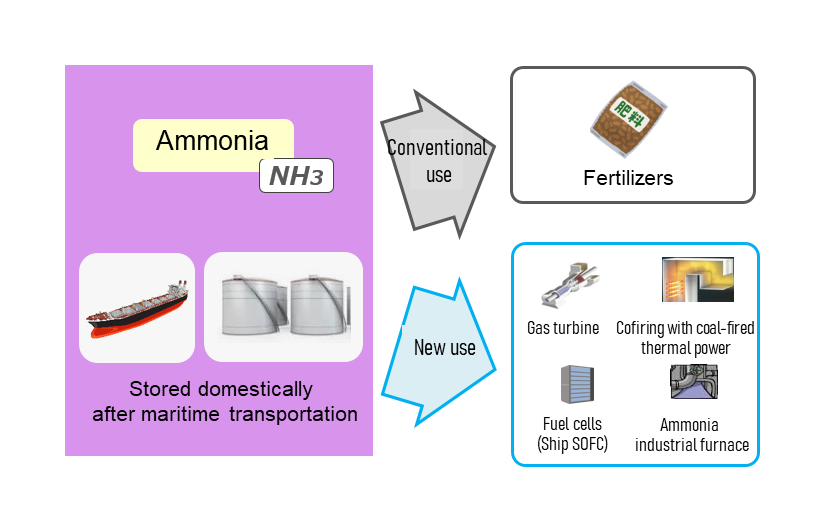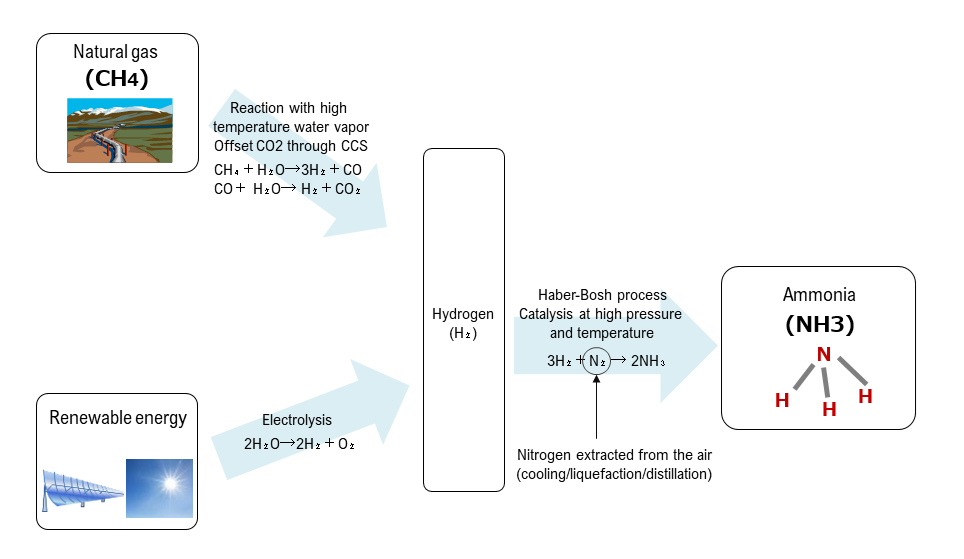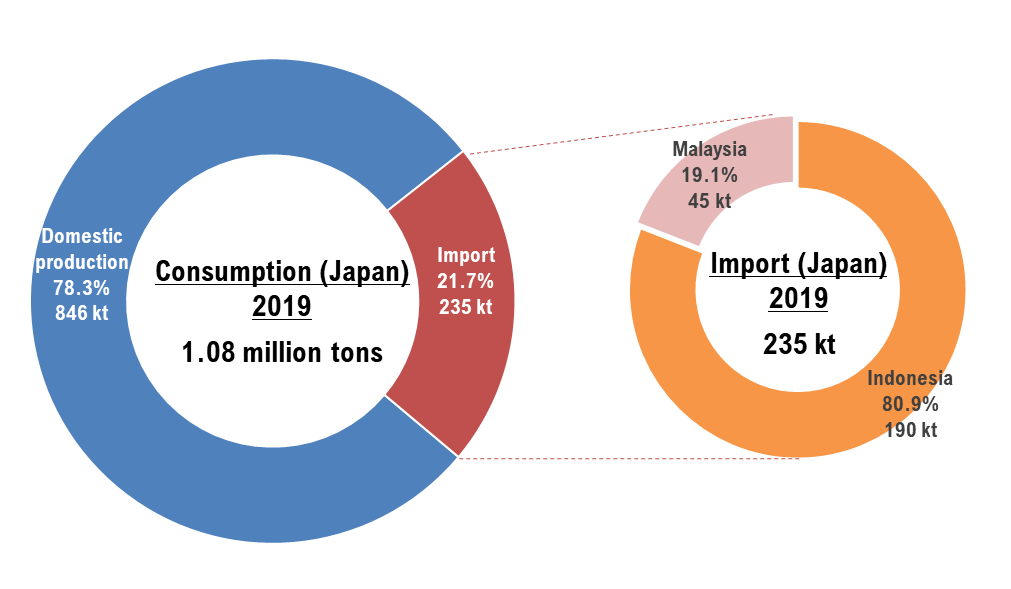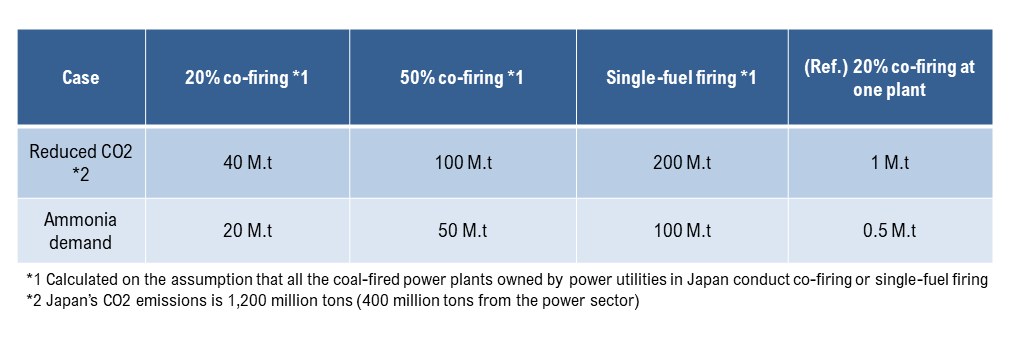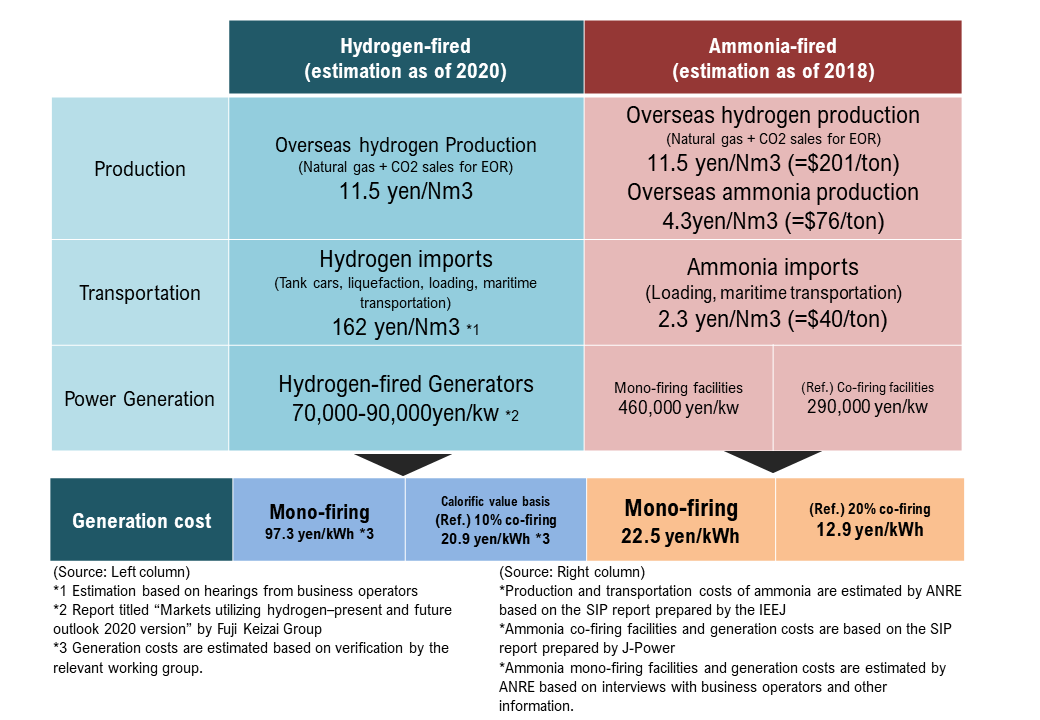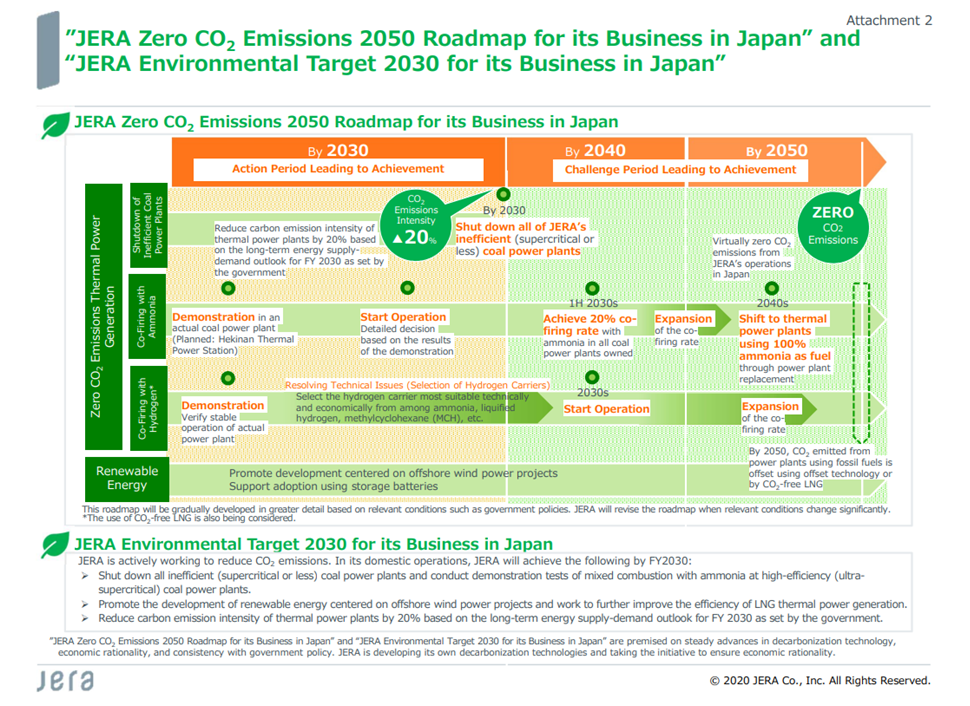Ammonia can be used as fuel!
Part 1: Ammonia is commonly used in our daily life, but its potential is not widely known
(in provisional translation)
(English ver.) 2023-09-22

You may have the impression that ammonia is just a hazardous substance with a pungent smell. Many of you may know that it has traditionally been used as a fertilizer to grow crops. Besides the conventional use, ammonia has great potential as a next-generation source of energy. This article (in Part 1 and Part 2) focuses on its potential as a fuel, which is attracting attention. First of all, let us review the basics of ammonia, which may not be commonly known.
Ammonia as a base material to produce fertilizers and chemical products
Ammonia is a colorless gas at standard temperature and pressure. Being a poisonous material with a distinct pungent smell, it is classified as an extremely hazardous substance. It is a compound of nitrogen and hydrogen, with the chemical formula NH3.
Ammonia has traditionally been utilized as a fertilizer. Nowadays, most chemically composed ammonia is still being used as a base material for producing fertilizers.
Ammonia is also used as a countermeasure against nitrogen oxide contained in the soot emitted from thermal power plants. Nitrogen oxide is an air pollutant referred to as NOx. Ammonia acts as a reducing agent which separates NOx through a chemical reaction into nitrogen (N2) and water (H2O.)
Furthermore, ammonia is used as a base material for producing chemical products. Around 80% of global production is used to produce fertilizers. The remaining 20% is utilized for industrial purposes, producing the raw materials of melamine and nylon. As the world population is increasing, ammonia will continue to play an important role in fertilizer production to feed the increasing population.
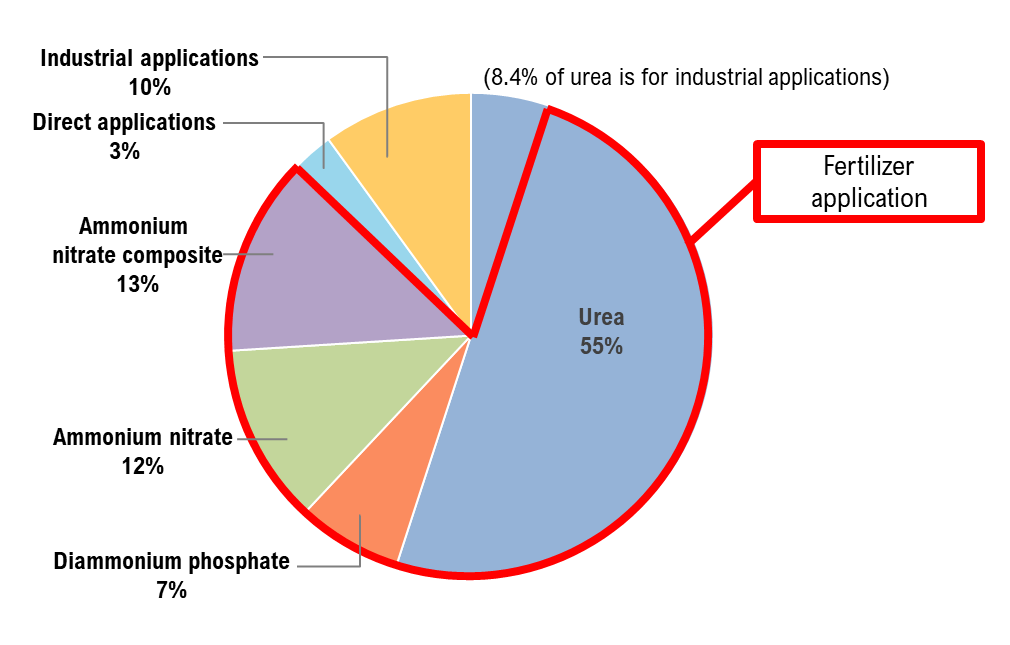
(Source) Created by the Institute of Energy Economics, Japan (IEEJ) and NEXANT in 2012
Because of the robust demand for ammonia shown above, it is being produced at chemical plants around the world. Hydrogen, derived mainly from fossil fuels such as natural gas, is used to synthesize ammonia. However, the utilization of “green hydrogen” which is produced from water electrolysis using electricity derived from renewable energy, such as solar power, is being studied as an alternate source of hydrogen.
As ammonia has a wide range of applications as shown above, technologies for safe transportation have been established. For land transportation, pipelines and tank cars are used while tankers are employed for maritime transportation. The safety guidelines for transport have also been well-developed.
Ammonia has a wider range of applications than you may imagine, with many uses that support our daily lives.
Global supply and demand of ammonia
The global production of ammonia in 2019 was around 200 million tons. Producing countries are, in the order of volume, China, Russia, the USA, and India. These four countries account for more than half of global production. They have an abundance of fossil fuel resources that are indispensable for ammonia production.
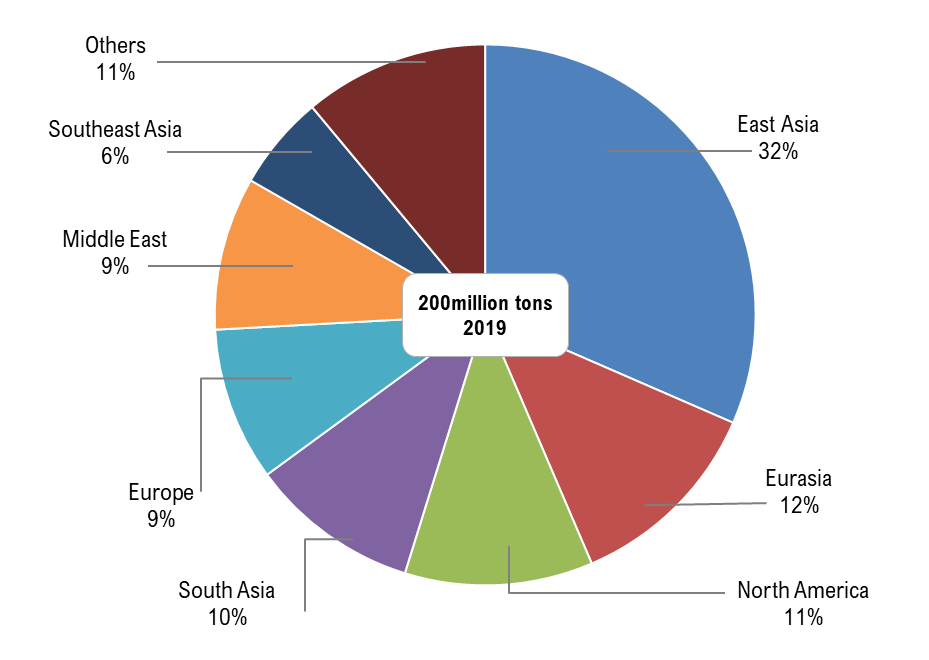
(Source) Document distributed at the Strategic Policy Committee held on December 21, 2020
On the other hand, the global import and export of ammonia in 2018 was only 20 million tons, about 10% of global production, which means that ammonia is mostly consumed within the producing countries. Countries producing large quantities of ammonia are also major agricultural countries with large populations. It is thought that they use domestically produced ammonia to produce fertilizers.
The largest exporter is Trinidad and Tobago, followed by Russia and Saudi Arabia. These three countries account for half of the global exports. The largest importer is the United States, which is the largest customer of Trinidad and Tobago. The second-largest importer is India, followed by Morocco, the ROK, and China. These four countries account for half of the global imports.
Japan consumed 1.08 million tons of ammonia in 2019, 80% of which was domestically produced. The remaining 20% was imported from Indonesia and Malaysia.
The role that fuel ammonia is expected to play in reducing CO2 emissions
A new application for ammonia is attracting attention in the field of energy.
For one thing, as hydrogen is expected to be a next-generation source of energy, ammonia can serve as an efficient hydrogen carrier, i.e., a means of transporting hydrogen. As explained above, ammonia is a compound of nitrogen and hydrogen, with the formula NH3. Transporting hydrogen, liquid H2, in large quantities is a very complex process. Instead, ammonia is an easier energy carrier with an already-established transportation method. Hydrogen can be transformed into Ammonia and then transported. After arriving at the consumption location, hydrogen can be separated from ammonia. This process is currently being studied.
Additionally, the utilization of ammonia as a fuel (fuel ammonia) has been studied in recent years. Ammonia is a carbon-free substance that emits no CO2 during combustion. Technological development is underway to realize single-fuel-firing of ammonia at thermal power stations in the future. In the meantime, mixed combustion at coal-fired power stations can reduce CO2 emissions.
As explained earlier, technologies for producing, transporting, and storing ammonia have already been established with well-organized safety measures and guidelines in place. Utilizing ammonia as a fuel will not require large upfront investment because the existing supply chain can be used, enabling early commercialization. This is a great advantage of ammonia as a next-generation source of energy.
A demonstration test is being conducted by co-firing fuel ammonia at a ratio of 20% at an existing coal-fired power plant. If all the coal-fired power plants owned by the power utilities in Japan conducted 20% co-firing of fuel ammonia, it would reduce CO2 emissions by 40 million tons. Moreover, it is expected that the co-firing ratio will increase through technological developments with a view to ultimately achieving single-fuel firing of ammonia in the future. If all those coal-fired power plants were converted to single-fuel firing ammonia plants, the reduction in CO2 emissions would amount to 200 million tons. In this way, the introduction of fuel ammonia will have a great impact.
The power generation cost of ammonia co-firing is much lower than that of hydrogen.
The government is not the only organization that is working on the utilization of ammonia at power stations. JERA, the largest thermal power company in Japan, published a roadmap titled “JERA Zero CO2 Emissions 2050” in October 2020, which clearly refers to the shift to ammonia co-firing and mono-firing in the future.
However, the utilization of fuel ammonia is facing the challenge of delivering a stable supply of adequate quantities for this purpose. 20% ammonia co-firing at all the coal-fired power stations in Japan will require 20 million tons of ammonia, which is almost equivalent to the total global imports and exports at the present time.
There will be increasing demand for ammonia in the future if more coal-fired power stations start co-firing, or they increase the co-firing ratio or start mono-firing, which may result in global supply shortages and price hikes of ammonia. This situation may also have a great impact on the global fertilizer market. We must carefully consider countermeasures against these potential outcomes.
Part 2 of this article will present the promise and challenges of utilizing fuel ammonia, outlining the methods of utilization as well as how those challenges can be overcome.
Division in charge
About this article
Policy Planning Division, Natural Resources and Fuel Department, ANRE
About Special Contents
Research and Public Relations Office, Commissioner’s Secretariat, ANRE
![]() The original Japanese text of this article; Click here
The original Japanese text of this article; Click here
